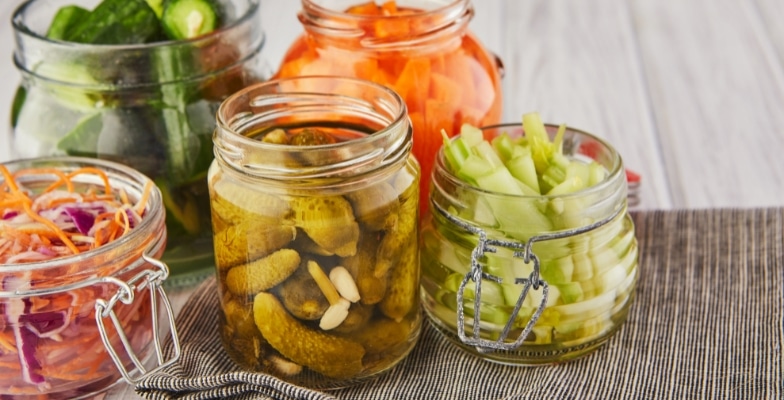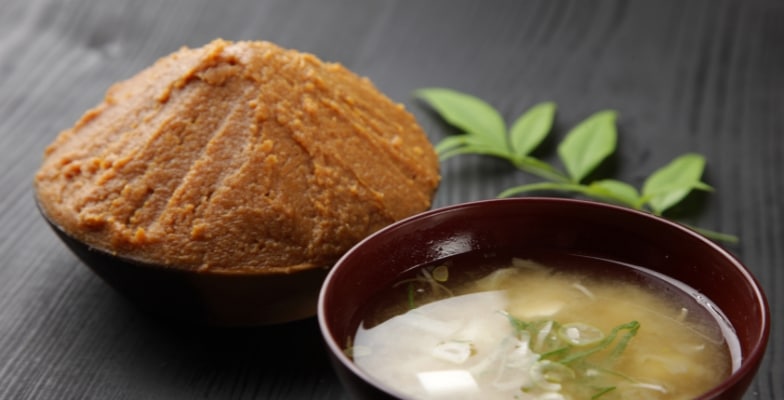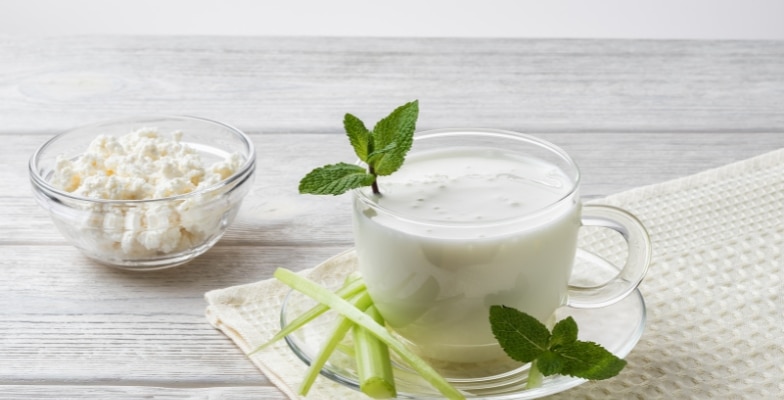Pineapple Nutrition Facts | What Are The Benefits Of Pineapple For Health?
- Introduction
- Pineapple Nutrition Facts
- Varieties Of Pineapple
- Benefits Of Pineapple For Health
- Possible Risks
- My Recommendation

Introduction
Be a Pineapple: Stand tall, wear a crown, and be sweet on the inside.
~Katherine Gaskin
What a description of this fantastic, sizeable tropical fruit with a tough, spiky skin and sweet insides called pineapple. Pineapple provides nutrients that can help us stand tall and strong. The pineapple, Ananas comosus, is the most edible fruit in the Bromeliaceae family. 1https://www.dictionary.com/browse/pineapple
It is a yellow fibrous, fleshy fruit with a tropical flavor that balances sweet and tart. The fruit closer to the base has the most sugar content, sweetest taste, and tender texture.
Pineapples are not just one fruit but an amalgam of many flowers or individual berries that grow together around a central core. Each pineapple scale is a unique flower or berry and can be recognized by an eye, the rough spiny marking on the pineapple’s exterior.
Pineapple is native to South America and cultivated for many centuries. The first European to encounter the Pineapple was Columbus in 1493. The Portuguese took pineapples from Brazil and introduced them to India by 1550.
For centuries, pineapples were rare and expensive, and only very wealthy people could afford to buy them. Today, they are grown in tropical and subtropical countries like the Philippines, Indonesia, India, and China and are available worldwide.
The pineapple fruit has few lingo names; it is widely called pina by Spanish-speaking people because its shape is similar to a pinecone. Pineapple in Hindi is called ananas for its genus name, which is also the Dutch, French, and colonies used. It is abacaxi in the Portuguese tongue, nanas in southern Asia, and PO-lo-mah in China.
Pineapple Nutrition Facts
Pineapple’s nutritional benefits are as unique as its physical properties (unlike most fruits, pineapples are not grown from seeds). Fresh raw, cut pineapple has different nutritional facts from pineapple juice.
Pineapple fruit is fat-free, cholesterol-free, and very low in sodium content. Not surprisingly, it does contain sugar, about 14g per cup. 2https://nutritiondata.self.com/facts/fruits-and-fruit-juices/2019/2 Pineapple is an excellent source of manganese vitamin B1, B6, copper, dietary fiber, folate, and pantothenic acid.
Pineapple is the only known source of a digestive enzyme called bromelain, which has various potential health benefits. 3https://pubmed.ncbi.nlm.nih.gov/23304525/ Bromelain is typically used for burns and may help prevent osteoarthritis, cancer, digestive problems, and muscle soreness. 4https://www.nccih.nih.gov/health/bromelain, 5https://www.ncbi.nlm.nih.gov/pmc/articles/PMC3529416/
Pineapple And Vitamin C
Vitamin C is a vital water-soluble vitamin that we need to acquire from diet or supplements. Pineapples contain an ample supply of natural vitamin C; a cup of raw-cut pineapple (165 g) provides 78.9 mg, 131% of the daily recommended value. One cup of pineapple juice (250g) provides 25 mg of vitamin C. 6https://nutritiondata.self.com/facts/fruits-and-fruit-juices/2019/2., 7https://pubmed.ncbi.nlm.nih.gov/31233691/
Vitamin C has many health benefits, such as boosting antioxidant levels, lowering blood pressure, protecting against gout attacks, improving iron absorption, increasing immunity, and reducing heart disease and dementia risk. 8https://ods.od.nih.gov/factsheets/VitaminC-HealthProfessional/#h2 , 9https://academic.oup.com/ajcn/article/108/5/1069/5201459
Furthermore, due to their high vitamin C content, pineapples are good for oral health and may reduce the risk of gingivitis and periodontal disease. 10https://onlinelibrary.wiley.com/doi/full/10.1111/1541-4337.12263
Varieties Of Pineapple
There are many commercial cultivars of pineapple. Let’s look at a few common ones.
Smooth Cayenne
This is characterized by a cylindrical form, shallow eyes, orange rind, yellow flesh, low fiber, juiciness, and a rich, mildly acidic flavor.
St. Michael
This variety of Smooth Cayenne has a tiny crown and a small core. It is sweet with low acidity.
Giant Kew
It is a well-known variety in India. It bears extensive fruit and has a large core, resulting in too large a hole for canned slices.
Charlotte Rothschild
Again also grown in India, it tapers toward the crown. It is orange-yellow when ripe, aromatic, and very juicy.
Monte Lirio
This variety is from Mexico and Central America and has smooth leaves with no terminal spine. The fruit is rounded with white-fleshed and has a pleasing aroma and flavor.
Brecheche
This is grown in southern Venezuela. It is a small fruit with a spineless crown and yellow fleshy fiber. Its core is short, and it is very fragrant and juicy.
In the ranking of pineapples’ quality, the crown can be an asset or a liability. Large crowns are more attractive than small ones but comprise more inedible material. There is a significant difference in nutritional value in canned versus fresh pineapple and pineapple juice.
Benefits Of Pineapple For Health
May Prevent Cancer
Pineapples are an excellent source of vitamin C, the most crucial antioxidant compound for humans. Vitamin C helps fight the formation of free radicals, which may be linked to cancer development. 11https://pubmed.ncbi.nlm.nih.gov/12452674/
Bromelain, a digestive protein enzyme in pineapples, possesses potent anti-cancer effects, demonstrated by in vitro and in vivo studies, along with a few anecdotal human studies. 12https://pubmed.ncbi.nlm.nih.gov/24123777/, 13https://pubmed.ncbi.nlm.nih.gov/23570457, 14https://pubmed.ncbi.nlm.nih.gov/20848558/, 15https://pubmed.ncbi.nlm.nih.gov/22191568/
Healing And Inflammation
Some studies suggest that bromelain, primarily in the pineapple stem, may reduce swelling, bruising, healing time, and pain linked with injury and surgical interventions. 16https://www.ncbi.nlm.nih.gov/pmc/articles/PMC3529416/, 17https://pubmed.ncbi.nlm.nih.gov/1548991/, 18https://pubmed.ncbi.nlm.nih.gov/24589242/
Bromelain’s potent anti-inflammatory and analgesic effect can also help relieve osteoarthritis and rheumatoid arthritis symptoms. 19https://pubmed.ncbi.nlm.nih.gov/29167795/ Bromelain extract is used as a traditional folk remedy for several ailments. 20https://pubmed.ncbi.nlm.nih.gov/28065968/
Safe For Diabetics
Pineapples are high in water content and sugar, with a glycemic index (GI) of 59 and a glycemic load of 6; whole fresh pineapple in moderation may be safe for people with diabetes to consume.
The enzyme bromelain may also exhibit anti-diabetic properties. 21https://www.ncbi.nlm.nih.gov/pmc/articles/PMC3529416/, 22https://www.researchgate.net/publication/285663649_Bromelain_An_overview I recommend diabetic patients consume pineapple with the knowledge of their Physician.
Related Article: What Is Glycemic Index | Food List With Glycemic Index
Promotes Healthy Digestion
Pineapples are 86% water and a good source of fiber, and both may help prevent constipation and promote a healthy digestive tract.
Related Article: What Is Fiber? Health Benefits, Food Sources And Daily Requirements
The bromelain enzyme in pineapples helps break down the amino acid bonds in protein, stimulating better digestion and gut health. 23https://www.ncbi.nlm.nih.gov/pmc/articles/PMC3529416/, 24https://pubmed.ncbi.nlm.nih.gov/19152478/
May Shorten Recovery Time After Strenuous Exercise
Strenuous exercise may damage muscle tissue and cause inflammation. Affected muscles cannot produce as much force and are sore for up to three days. Bromelain in pineapples may speed up the recovery from damage caused by strenuous exercise by reducing inflammation around the damaged muscle tissue. 25https://pubmed.ncbi.nlm.nih.gov/25604346/
Possible Risks
The horticulture department at Purdue University suggested that eating unripe pineapple or drinking pineapple juice from unripe pineapples can be dangerous.
Unripe pineapple may be toxic to humans and lead to severe diarrhea and vomiting. 26https://hort.purdue.edu/newcrop/morton/pineapple.html#Toxicity Some people have a pineapple allergy. Pineapple allergy risk is more significant for those allergic to other fruits, pollen, or latex. 27https://www.ouh.nhs.uk/patient-guide/leaflets/files/5537Poralallergy.pdf
My Recommendation
The healthiest way to eat pineapples is raw or frozen, with no added sugar. Added sugar in canned or processed pineapples can raise blood sugar levels. Choose fresh pineapples over pineapple juice (which has fewer nutrients and fiber) or dried pineapple.
It is well-established that lifestyle changes such as the intake of a healthy diet and increased physical activity are the most effective way to lead a healthy life and prevent or delay diseases.
I suggest including pineapple in moderation and complementing it with protein like lean meats or healthful fat like nuts and seeds to limit its effects on blood sugar levels.
What do you think of this article? Have any questions? Let me know in the comments below!

Skill-Based Education.
Global Recognition.
Powerful Community Building
Secure a certificate of completion in as little as a day by graduating from one of our free courses.
Get Access to Our Free Courses. No Credit Card Required.

Fabulous Body Membership
Your All-Access Pass to A Fabulous Body & A Rewarding Career
25+ Certificate Courses & Programs, All Included
15 Day Free Trial, 100% Money-Back Guarantee
About Kamini Thakar
Kamini is a very skilled writer/content creator. As a part of Fabulous Body for years, she has authored many articles really proving her prowess in acquiring and presenting knowledge about various health & nutrition topics.










